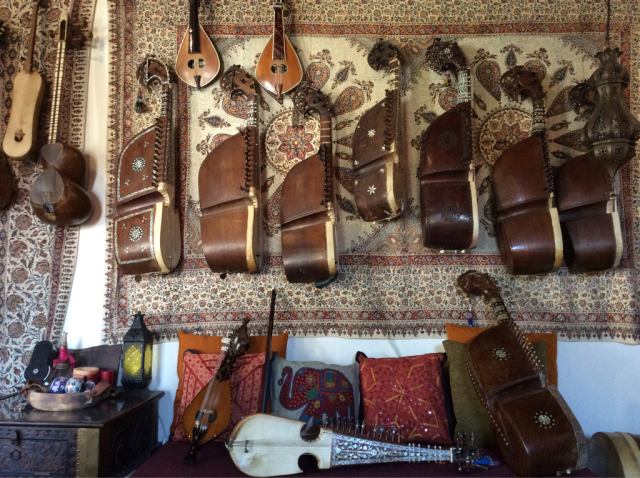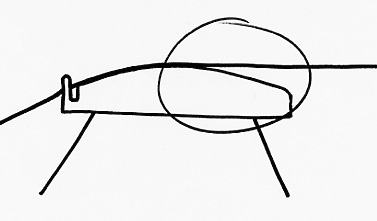Hi, I’m Takayuki Ueda from Tokyo modal music lab.
I’d like to introduce you to the Rabb, an instrument that allows you to meditate with mindfulness
I’d like to share with you 5 topics about rubberb, a musical instrument that allows you to do mindfulness meditation that will take you to the meditation sound world.😌
1Magical sound by bone
2Overtones that can also be used for mindfulness
3The sound I once heard in paradise
4Easy to make Jawari with diy
Tokyo modal music lab is not only performing, but also experimenting with instrument production and repair, so if you read the article to the end, you’ll understand what I’m talking about. So, I’ll give you a quick explanation in about 10 minutes while you drink some chai.
An oriental instrument such as a lavab doesn’t make a big sound like a Western instrument that echoes loudly in a concert hall.
They also don’t use a system of chords that appeal to emotions such as happiness or sadness.
Instead, there is a delicate and rich sound with overtones that cannot be produced by average-toned Western instruments such as the piano or guitar. Let’s take a deep dive into the mysterious system of the lavab, a cultural heritage from ancient civilizations.
Jawari the amazing system from Bone
Bones out of nowhere? Overtones? You may think it doesn’t make sense, but imagine for a moment that your body is also made of bones, isn’t it? So, it should not be a problem for anyone.
- Voice with bone conduction + air conduction
- My own voice recorded Air conduction only
Have you ever had the experience of hearing your own voice on a recording
Have you ever had an experience where you hear your own voice on a recording and it sounds like it’s not your voice?
Most of your voice is heard through your bones.
So when you hear a recorded voice that is only transmitted by air, you feel uncomfortable.
Even though we are all making the same sound, it changes a lot when you add the sound transmitted through the bones. That’s how easily sound is transmitted through bones, isn’t it?
But it’s not just rubbers that have bone bridges, right?
Yes, it’s true that some guitar nuts and pins are also made of bone.
So if you just make a bridge out of bone and put strings on it, you won’t get the overtones you want.
If you modify the bone parts a little bit, you can make it sound like
It is possible to create a rich and fine sound with overtones that will take you to outer space. This kind of work is called “jawari.
What do you think?
There was a big difference in the overtones between installing and not installing the small bone parts (Javari bridge).
There was a big difference in the overtones.
Does it look Indian? Yes, it is indeed attached to the sitar.
Jawari is also called “Sawari” in Japanese, and is also used in Biwa and Shamisen. Jawari and Sawari have a similar sound, don’t they?
Why overtones are effective for mindfulness
Dr. Ohashi and his colleagues have been studying the hypersonic effect, which means that the high frequency sound produced by the overtones activates NK cells, which are responsible for immunity, and reduces stress hormones.
Dr. Chikara Ohashi and his colleagues have been studying the hypersonic effect, which is the reduction of stress hormones.
※Reference Informationhttps://natgeo.nikkeibp.co.jp/nng/article/20140203/382306/?P=1
is similar to the jawri attached to a rubber band.
Because of the Sawari, a rich sound with fine and high frequency overtones can be created. By focusing on these overtones, the effect of mindfulness meditation is enhanced. This is a feature that is not found in today’s music, which emphasizes entertainment. I don’t mean to criticize today’s music, but
I’m not trying to criticize today’s music, but by listening to the overtones, you can hear the infinitely fine and rich sound contained in a single note.
By listening to the infinitely fine and rich sound
By listening to the rich and subtle sound of the overtones, I can clear my mind of evil thoughts and reset my mind, leading me to new musical possibilities.
The sound of the rubbish I once heard in paradise
Rumi, the Mevlana, a poem of Sufism, is
It was said that by listening to music, we can approach the memory of the paradise in which we once existed.
It was said that by listening to music, we can come closer to the memory of the paradise where we once existed.
We, the descendants of Adam, once listened to the music of the angels with him.
Although the distant memories of long ago are now frayed and torn.
But it still remains in the depths of my ears, a reverberation unrelated to anything on earth.
The sound of paradise? Has anyone ever been there? I wonder if it’s true? You might think so.
However, scientific studies have shown that early humans lived in forests near rivers, so it is not so far-fetched to think that the paradise we once lived in was covered with forests, as described in the Bible.
As humans leave the forests and form urban civilizations to live in cities, the environment is filled with high frequency environmental sounds that are rarely found in urban environments.
The urban environment is filled with environmental sounds with high frequencies that are rarely found in the city.
It is thought that people created musical instruments such as the biwa and the lavabo in order to find comfort in the fine, rich, high-frequency sounds that they experienced in the forests where they once lived.
I tried to make a jawali with diy.
In fact, it is surprisingly simple to make a device that can produce a delicate and rich sound.

When I visited the island of Crete in Risha, I was taught how to handle the resonant string lyra by modal musician Ross Daly, and incidentally learned how to adjust and make the jawali.
- Stick file
- Slender saws
- Vise
You don’t need a particularly expensive electric machine to do this.

By adding a subtle curve at an angle finer than 1mm, you can create a bridge that sounds like this
You can make a Javanese bridge with overtones.
However, for those who don’t usually make things, it may be too difficult.
So if you want a Javari, please contact us individually.
Why La Babe is the best way to experience the sounds of paradise
So far, some of you have read this.
Bjorn overtones have a subtle but rich healing sound that humans can feel by default.
I’m sure you can understand that the buzzing overtones have a delicate but rich healing sound that we can feel by default. But then, you might be thinking, why don’t I use a sitar instead of a Ravab, or a medieval harp with a braypin? You might be thinking, “Why not a sitar instead of a Ravab, or a medieval harp with a braypin? Well, I think that’s perfectly fine.
The lavabo is not as bouncy and super exotic as the sitar.
It is not as easy to ensemble with various instruments as the harp.
At any rate, the main strings are three courses, so it’s not very versatile.
In this respect, the Ravab is not as long as the sitar, which is 1 or 2 meters long.
You don’t have to play it in a pose, as if you were practicing Zen meditation.
There is no need to raise your shoulders like on the harp.
I can play the Rabab like I’m sitting in a chair with an arm rest, which makes it very easy to relax.
In fact, I was able to perform with a rubber band last year even though I was in a lot of pain from my 40s shoulder. If I had been playing the violin or harp, it would have been impossible.
- Can be played in a relaxed position
- Small size is 27 inches
- Not only does it look Indian, but it can also be used for medieval and ancient music.
- It has only four frets.
That’s how I summarized the characteristics of the rubber band at the end.
I’ve been playing various instruments since I was in music school, starting with the guitar, and I can say without a doubt that the rubber band is an instrument with a low level of difficulty.
If you’d like to see what it’s really like, or if you’d like to try playing it for a while, feel free to contact us for a free trial.

